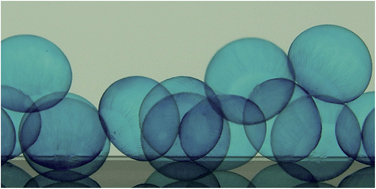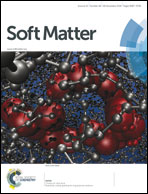Physicochemical properties of aqueous core hydrogel capsules
Abstract
Capsules having a thin alginate hydrogel membrane and an aqueous core can be obtained by a process that involves a co-extrusion step in air followed by a sol–gel transition of the shell after immersion into a gelling bath. The possibility to encapsulate cells that further grow in these biocompatible compartments, and thus offer a versatile tool for cell culture, led us to investigate the physicochemical properties of the capsules. A cut-off pore size of the semi-permeable membrane is extrapolated from the release of polymers out of the capsule. When polymers cannot diffuse through the membrane, the osmotic pressure mismatch between the core and the surrounding medium triggers an inflation of the capsule. The swelling may reach a steady state that allows the determination of the elastic features of the hydrogel shell. On the other hand, the capsule membrane may rupture and then contract. From this stress-relaxation process, a critical deformation of the hydrogel shell above which plasticity occurs can be deduced. Finally, thanks to the physical nature of the hydrogel, the core content can be released by dissolving the membrane with the help of small electrolytes. The shell life is shown to vary inversely with the ionic strength of the solution.


 Please wait while we load your content...
Please wait while we load your content...